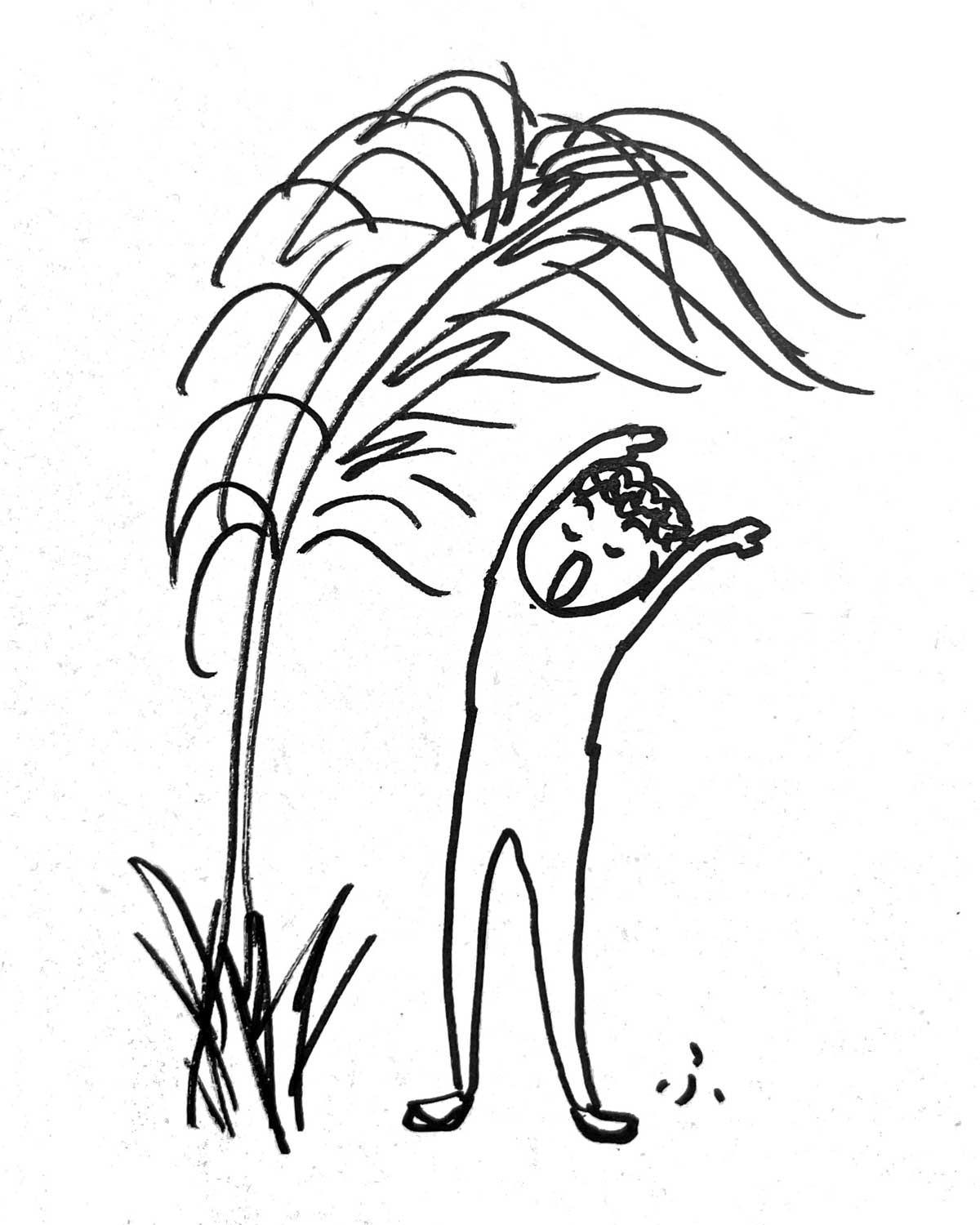When I embark on a journey with a new client, I often ask about their goals for therapy. It’s not uncommon for them to express desires like, “I want to stop worrying,” or “I don’t want to feel depressed anymore,” or perhaps, “I just want to wake up feeling positive and ready to tackle the day.” In response, I gently remind them of a truth we often overlook: the phrase “And they lived happily ever after,” so prevalent in fairy tales, is a charming fiction, not a realistic expectation.
Well, anything is possible in a fairy tale, but in real life, sustained happiness isn’t a destination we arrive at and stay perpetually. It’s more like a dance—sometimes we’re in sync with the music, and sometimes we stumble. Those who seem to radiate joy are often putting in behind-the-scenes effort to maintain it. Life brings its share of worries and stresses, serving as the catalysts that propel us forward.
Cultivating the ability to release stress and share our worries can significantly contribute to our mental well-being. Alongside basics like sleep and nutrition, studies show that moderate exercise and social interaction play vital roles in maintaining mental health as we age.
So, while the notion of living happily ever after may be a myth, I propose a more attainable alternative: “good enough.” This concept, popularized by British pediatrician and psychoanalyst D. W. Winnicott in his theory of the “good enough mother,” suggests that aiming for perfection isn’t necessary for success—in fact, it often hinders it. (The theory itself is about mothers/caretakers and child-rearing, and there are many articles about it online, so please take a look) I have become accustomed to this concept, and in various situations I give myself the OK signal by saying, “Well, it’s not perfect, but it’s good enough” and move on. By embracing “good enough,” especially in moments of pressure or obsession, we can alleviate unnecessary stress and achieve better outcomes.
Similar to this idea of “good enough” is the “willow” concept that I created. Like the willow tree, which bends gracefully in the face of both sunshine and storm, cultivating resilience is a powerful tool for mental health. When faced with periods of low mood or lack of motivation, instead of succumbing to anxiety or reaching for quick fixes (like social media, alcohol, etc.), consider adopting the willow’s flexibility. Engage in simple actions—taking a walk, tidying up—that can shift your perspective and mood. By weathering these uncomfortable moments, we pave the way for brighter times ahead, without fixating on when they’ll arrive.
In other words, it can be said to be “flexible”. Flexibility also allows for adaptability in our thoughts and actions. Rather than forcing ourselves into rigid routines, we can learn to pivot, saying, “Today wasn’t ideal, but there’s always tomorrow,” or “I’ll tackle this task in a different way.” This mindset shift, while aimed at achieving peace of mind, can ripple positively into other aspects of life.
If you’re feeling drained or low right now, I invite you to embody a willow tree (if you are unable to do so now in your current situation, imagine yourself embodying it). Picture yourself swaying gently from right to left in the breeze, and practice very slow diaphragmatic breathing. Repeat the process 5 to 6 times.
Now, what are your thoughts and feelings?
新しいクライエントさんと働き始める時に、サイコセラピーのゴールは何かをお伺いします。「心配しない自分になりたい。」「落ち込む気持ちを感じないこと。」「朝起きて、意気揚々と職場に向かって、自分の好きな仕事をして、、、。」などと続くと、お伽噺の終わりにある『ずっと幸せに暮らしましたとさ。』は「実は嘘なんですよ。」と、お伝えすることがあります。
まぁお伽噺の中でなら何でもありですが、実際の私たちの人生で、この「ずっと幸せ状態」というのはありえないのです。 幸せに満ち溢れているように見える人は、そう見えるように陰で一生懸命努力しているものです。生きていると、心配事やストレスは多かれ少なかれあるもので、それらが触媒となって、自分の人生が動き出すこともあります。
なので、ストレス発散の上手な人や、心配事を一人で抱え込みすぎない人は、それだけでメンタルヘルスの観点からの心の平静を保ちやすいということになります。睡眠、栄養のある食事に加えて、年齢が上がると、適度な運動と他者との交流も精神的な安定に貢献することが分かっています。
さて、『いつまでも幸せに暮らしましたとさ」は「実は嘘。」と言われた時「そりゃそうだけど。。。」という方に提案したいのが、『ほどほどに良い』を目指すことです。私などはもうこのコンセプトが癖になっていて、いろんな状況で「まぁ、(最高レベルではないけど)十分十分。」と自分にオッケーサインを出してあげるわけです。私がこの『ほどほどに良い』に出会ったのは、British pediatrician and psychoanalyst D. W. Winnicottのgood enough mother 説を学んだ時です。その学説自体は、母親、子育てについてのものなのですが、(オンラインでたくさん紹介されているので、みてみてください)ポイントは、100%完璧よりも「ほどほど」の方が実は(自分、周りの人も含めて)良い結果につながっていくということ。プレッシャーや強迫観念を持ちやすくなっている時だけでなく、日常の様々な設定で練習してみてください。
この『ほどほど』コンセプトと少し似ているのが、『柳』コンセプト。柳って、お天気の日でも大雨の日でも、かわらずひょろひょろしていますよね。しなりしなりと雨風をうまくやり過ごしている感じ。この「やりすごす力」がメンタルヘルスでは強力な武器になるのです。例えば、理由もなく気分が落ち込んだり、やる気が出ないとき。いろんな締め切りが迫っているのにどうしよう。あなただったらどうしますか。焦ったり、エネルギードリンクを飲みまくりますか。そうなる時もあるでしょう。でも、「うーん、ちょっとのらないなぁ。。。」と、だらりとした「柳」になってみると、少し違った世界が見えるはず。簡単にできる気分転換(少し歩き回ったり、ゴミを出したり、、、体を動かすことがお勧めです)をして、その気持ちの悪い/のらない時間を「やりすごす」事ができれば、いずれ自然に「のる」時間がやってくるものです。
他の言い方だと「柔軟性がある」ともいえます。柔軟性があると、「今日は気分がのらなかったけど、明日またがんばってみよう。」とか、「デスクワークの気分がのらないので、とりあえず他の用事をしよう。」というふうな、柔軟な考え方が出てくるというわけです。(あくまで、心の平静をゴールとしての提案ですので、ご了承ください。)
もし、今の瞬間心がしんどければ、「柳」になっている自分を体現(もし今できない状況であれば、体現している自分を想像して)力を抜いてひょろーりひょろりと左右にゆれてみてください。そして、そのまま横隔膜呼吸をゆーっくり5~6回してみてください。
気分か気持ち、もしくは両方、どのように変わりましたか。

